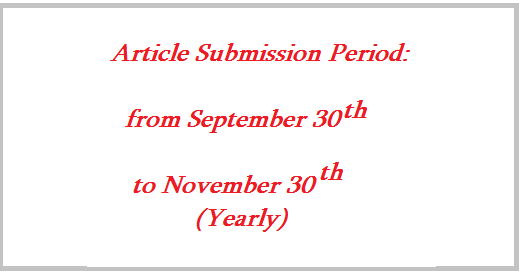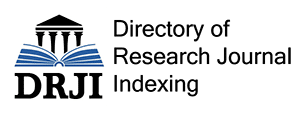The Problem of the Authorship of De Sectis and the Old Georgian Translation of the Treatise Presented in “Dogmatikon” of Arsen Vachesdze
DOI: 10.55804/jtsuSPEKALI-18-20
The treatise known as De Sectis, which consists of 10 words, i.e. 10 chapters, is dedicated to the discussion of the Christological issues and aims at the condemnation of the heretical doctrines. For this reason, in the Western scientific tradition this composition was called De Sectis or "About the Heresies". Its research has a long history. However, there exist only one critical edition of the text, which belongs to Belgian researcher Maryse Waegman [Waegman, 1982]. Unfortunately, the publisher did not consider the very important Georgian source for the study of the history of the text, because until Leila Datiashvili's publication, western scholars had no information about the existence of the Georgian translation of De Sectis.
In 1980 Leila Datiashvili published the book "Theodore Abū Qurrah - Treatises and Dialogues" [Datiashvili, 1980]. In the book, among the translations of the works of Theodore Abū Qurrah (one of the outstanding representatives of the Eastern theology of the 8th-9th centuries) made by Arsen, there is the treatise entitled "Scholia of Theodore, the most pious Abba and the wisest philosopher, which philosophizes as necessary on both holy and foreign writings" [Datiashvili, 1980:24-77]. Immediately after the publication of the Georgian translation of Abū Qurrah's works, the foreign Kartvelologists, namely, Bernard Outtier and Michel van Esbroeck became interested in it. In the issue of Bedi Kartlisa of 1982, Outtier published the information about the Georgian edition of Datiashvili's Abū Qurrah [Outtier, 1982] and indicated all the works with corresponding Greek original included in this edition. Accordingly, it becomes clear that: 1. The author of the first composition of Datiashvili’s book is not Theodore Abū Qurrah. It is Leontious - the figure of the 6th century, which was completely unknown to the Georgian translated literature; 2. The Bernese original of De Sectis, which was considered as lost by the Georgian scientists, exists and its research has a long history in Europe. The Georgian scholars considered the Greek original of De Sectis as lost due to some misunderstanding: they attributed this work to Theodore Abū Qurrah [Datiashvili, 1977: 21]. They looked for its Greek original in volume 97 of PG1, where the Greek and Latin translations of Abū Qurrah's compositions were presented. After failing in finding the text there, Datiashvili supposed that either the publisher had not been able to find the Greek manuscript of the mentioned composition, or the Greek version of De Sectis had been lost and only its translation had reached us [Datiashvili, 1977:23].
After Outtier, another Kartvelologist, M. V. Esbroeck, published two studies: "De Sectis attributed to Leontius the Byzantine, in the Georgian translation of Arsen Ikaltoeli2" [Esbroeck, 1984] and "De Sectis attributed to Leontius the Byzantine, date and author" [Esbroeck, 1985]. As Datiashvili notes, the appearance of the Georgian translation gave the Belgian scientist the opportunity to study these issues once again and most importantly, to compare Arsen’s text with the Greek original. The Georgian scientists did not have such an opportunity while publishing Arsen’s translation of the text [Datiashvili, 1989: 210]. In his letter, Esbroeck writes about the confusion of the authors of the 6th-8th centuries by the Georgian publisher [Esbroeck, 1984: 35] and due to the fact of anachronism, excludes Theodore Abū Qurrah’s authorship of De Sectis - the composition presented in the dogmatic collection Doctrina Patrum created between 668 and 680 [Esbroeck, 1984: 39]. Theodore Abū Qurrah was a figure of the 8th -9th centuries.
The analyzed text can be found in several Georgian manuscripts, the most complete of which is the manuscript S-1463. Therefore, it is the main list [Kekelidze, 1980: 277]. The work is included in all the manuscripts under the same title: "Scholia of Theodore, the most pious Abba and the wisest philosopher, which philosophizes as necessary on both holy and foreign writings" [Datiashvili, 1977: 22]. The Georgian scholars identify Theodore mentioned in the title with the bishop of Harran - Theodore Abū Qurrah. In one of his articles, Datiashvili explains this fact in the following way: one of the reasons for the misunderstanding was Arsen's authority; Not a single researcher, including us, thought of doubting the correctness of his information [Datiashvili, 1989: 296]. In this regard, it should be said that Arsen does not mention Abū Qurrah in the title. He mentions only the name – Theodore. This does not mean that he refers to Theodore Abū Qurrah. We can meet the usage of the expression "The most pious Abba and the wisest philosopher" in relation to other people as well.
Kekelidze also recognized Abū Qurrah in the words "Theodore, the most pious philosopher". He noted that Theodore Abū Qurrah, bishop of Harran, "should also be implied in "The most pious Abba and the wisest philosopher" [Kekelidze, 1980: 281]. The position of the Georgian scientists in relation to this issue was probably determined by numerous works that entered "Dogmatikon" under the name of Theodore Abū Qurrah. Supposedly, for this reason, "the pious Abba Theodore" was equalized with him. However, in this regard, it should be taken into account that in the manuscript S-1463 of "Dogmatikon" the works of Theodore Abū Qurrah are presented on pages 226r-256r and 288r-301r, while De Sectis is on pages 190v-202v. Based on the fact that the manuscript S-1463 is considered by scientists as the earliest and most complete version, the researchers assume that this manuscript should be the closest to Arsen’s version of the order of works [Otkhmezuri, 2022: 379]. Therefore, we believe that if Arsen considered Theodore Abū Qurrah as the most pious Abba and the wisest philosopher Theodore, he would probably place this work among Theodore Abū Qurrah’s works.
Accordingly, if the title of the composition does not refer to Theodore Abū Qurrah and refers to another Theodore, then who is this "other Theodore"? In addition, if a real author of this work is Leontious (as we learn from Outtier's letter), then what connects Theodore mentioned in the title to the analyzed text? This is what the researchers of De Sectis have been trying to find out for many years. However, there are still no definitive answers. We will try to present (as the number of pages of the article allows us) all the main hypotheses that exist in relation to this issue and afterwards, share our opinion.
The most important source for determining the author of De Sectis is the title of the text, which is presented in the following way: Σχόλια Λεοντίου σχολαστίκου Βυζαντίου ἀπὸ φωνῆς θεοδώρου τοῦ θεοφιλεσάτου Ἀββᾶ καὶ σοφωτάτου φιλοσόφου, τήν τε θείαν καὶ ἐξωτικὴν ὠς χρὴ φιλοσοφήσαντος γραφήν [Waegman, 1982: 1]. Accordingly, the title presents Leontius as the author of the treatise: Σχόλια Λεοντίου or "Leontius’ Scholia"3. Who is this Leontius and what do we know about him?
We mentioned above that according to Outtier and Esbroeck, the author of De Sectis should be the 6th century figure, namely, Leontius of Byzantium. Some scholars, including the first researcher of the text, Friedrich Loofs, equalized this Leontius with the 6th century figure, namely, Leontius of Jerusalem and attributed to him the authorship of the following three treatises: 1. Tres libri contra Nestorianos et Eutychianos ("Three Words against the Nestorians and the Eutychians"); 2. Solutio argumentorum a Severo objectorum ("Nullification of Severus' Arguments"); 3. Capita triginta contra Severum ("Thirty Chapters against Severus") [Rees, 1939: 346]4. However, according to the opinion shared today, the authors of De Sectis and above three treatises are different persons. Leontius of Byzantium and Leontius of Jerusalem are also different persons [Rees, 1939; Evans, 1970].
One of the most spread versions regarding the authorship of the treatise belongs to Loofs. Loofs saw the key in the phrase Σχόλια Λεοντίου. He supposed that before De Sectis, another work composed by Leontius of Byzantium and entitled as Σχόλια Λεοντίου or "Leontius’ Scholia" had existed. De Sectis could be a revised version of Leontius' original work, i.e. "Leontius' Scholia" written by Abba Theodorus. According to the researcher’s opinion, the revised version was quite different from the original work, which he considered lost. Loofs suggested that Leontius of Byzantium had created the original version of the work between 538 and 543 [Rees, 1939: 346-349]. To a certain extent, Loofs’ theory was supported by Esbroeck. He also believed that the original text, authored by Leontius of Byzantium, was later significantly modified by Abba Theodore [Internet Resource 1].
It should be noted that in the Georgian translation the phrase Λεοντίου σχολαστίκου Βυζαντίου was removed [S-1463: 190v; Datiashvili, 1980: 24]. The reason for this could be a different manuscript. Which manuscript was used by Arsen and what are data of the Greek manuscripts about Leontius the Byzantine? How many of them mention him as an author of the work? As a result of comparing the data of the manuscripts containing De Sectis, we can say that the name of Leontius of Byzantium is presented only in 5 manuscripts and the name Theodore (except the incomplete manuscript O) is mentioned in all of them, including the Georgian version containing Arsen’s translation. It should be noted that considering the data of the Greek manuscripts, Waegman comes to the conclusion that the main and most significant part of the title of De Sectis is not Λεοντίου σχολαστικοῦ Βυζαντίου. However, it is ἀπὸ φωνῆς θεοδώρου. He shares Rishar's opinion that ἀπὸ φωνῆς (the word-by-word translation: "from the voice", ἀπὸ φωνῆς θεοδώρου i.e. "from the voice of Theodore") implies the author. Therefore, the researcher assumes that the treatise must have been written by someone called Theodore [Waegman, 1976: 191-192]. As for the issue of Arsen’s original, it is highly probable that the name of Leontius of Byzantium was not mentioned in the source available to him. The basis of this assumption is given by Esbroeck's study. After getting acquainted with the Georgian translation of De Sectis, the scientist compares it with the Greek originals and concludes that the Georgian translation shows more proximity to the 12th century manuscript Athos Vatopedi N 236, which is denoted by the character C in Wagman's critical apparatus. In this manuscript, the title is presented as follows: Σχόλια ἀπὸ φωνῆς θεοδώρου τοῦ θεοφιλεστάτου Ἀββᾶ καὶ σοφωτάτου φιλοσόφου τήν τε θείαν καὶ ἐξωτικὴν ὠς χρῂ φιλοσοφῄσαντος γραφήν [Waegman, 1976: 191]. According to Esbroeck, this version of the title should have been in the manuscript available to Arsen [Esbroeck, 1984: 40-41]. However, in Arsen’s version, one can read the following: "Scholia of Theodore, the most pious Abba and the wisest philosopher, which philosophizes as necessary on both holy and foreign writings” [Datiashvili, 1980: 24].
At first glance, Arsen's Georgian translation does not contain such an important term as ἀπὸ φωνῆς. Consideration of the original meaning of this expression (which meant "according to") would completely change the meaning of the title (we would not have "the words of Theodore", but "according to the oral teaching of Theodore") presented in the translation. However, according to Richard's observation, this understanding of the term covered only the 5th-7th centuries and from the 8th century this formula has been simply denoting belongingness and has been referring to the author.Therefore, not "according to the oral teaching of Theodore", but "Theodore’s" [Richard, 1950: 222]. If this is so and if Arsen really had the manuscript from list C before him, it appears that he did not "forget" to translate the term ἀπὸ φωνῆς. Arsen translated it in accordance with his era, i.e. the 12th century, when this term meant belongingness: ἀπὸ φωνῆς θεοδώρου - "Theodore’s" [Esbroeck, 1984: 40-41]. We have no reason to think that Arsen did not translate the exact equivalent of the term, or, in general, left it untranslated, because his style of translation is based on the principles of Hellenophilic or word-by-word translation. It seems doubtful that he left such an important technical term balked. If Esbroeck's version is true and Arsen really used any of the manuscripts from list C, then the term ἀπὸ φωνῆς can be omitted in the Georgian translation and there is the additional argument (Richard's above-mentioned opinion) that from some period this term has denoted and has referred simply to the author.
The position of researcher Silas Rees is also interesting. He does not share Loofs’ version. According to the researcher’s opinion, the author of De Sectis probably uses the material (i.e. the above-mentioned three treatises: Contra N. et E., Epilysis and Triginta capita) of his predecessor, Leontius of Byzantium, as a source, while a creator and a true author of the work is the independent writer, namely, Abba Theodore [Rees, 1939, p.: 351]. Rees thinks that the treatise was probably the series of lectures given by Theodore on the history of religious movements and heresies. This is what the notice of the title ἀπὸ φωνῆς θεοδώρου should mean. Among Theodore's listeners might be certain Leontius, the Byzantine scholastic (not the author of these three treatises, but another Leontius) and contemporary of Abba Theodores. The term of the title - σχόλια Λεοντίου or "Leontius’ Scholia" - should refer to this. According to Rees, this Leontius of Byzantium should be responsible for the existence of today’s form of Theodore's lectures, or De Sectis [Rees, 1939: 359]. As for the date of creation of the work, the researcher dates it to 579-607. The basis for this is provided by the phrase "since the time of Justinian" (ἀπὸ τῶν χρόνων). According to him, the writer of these words seems to be recalling the reign of Justinian, i.e. 527-565. This could not be done by Leontius of Byzantium, the author of the above-mentioned three treatises, who died in 543 [Rees, 1939: 353-354].
If we share Rees-Richard's opinion, it will turn out that during the study of the question of authorship of De Sectis, we have to look for two persons: Abba Theodore (the alleged author of the treatise) and Leontius of Byzantium (the alleged "editor").
Abba Theodore
We do not know a lot about Theodore. The scientists equalized him with Theodore of Raith, who worked in the 6th -7th centuries and participated in the monothelite discussion. According to some sources, Theodore of Raith is the same as Theodore of Pharan, bishop of Pharan, whose date of death, in accordance to Oxford Byzantine Dictionary, is no later than 625 [Baldwin..., 1991: 2044]. We found "The History of Sinai" published in 1921 [Eckenstein, 1921: 133], which presents the brief note about Theodore, probably the last bishop of Pharan and the father of the Monothelite doctrine, whose active supporter was Sergius, Patriarch of Constantinople (610-638). Patriarch had a word with Pope Honorius (who worked in 625-638) about Theodore. Therefore, according to this note, it turns out that Theodore of Pharan was still alive in 625.
Cyril Hovorun believed that Theodore of Raith was Theodore of Pharan. Hovorun authored the extensive study of this figure. It is significant that the researcher did not mention De Sectis in his study. Moreover, he emphasized that the only surviving work of Theodore of Raith was Προπαρασκευή ("Preparation"), which was sometimes referred to as Περὶ τῆς ἐνσαρκώσεως or "On the Resurrection" [Internet Resource 2].
Similarly, Esbroeck does not consider monothelite Theodore of Raith among the authors of De Sectis. According to his opinion, all the passages that suggest the time period - the end of the 6th century or the beginning of the 7th century - as the date of creation of the work, were added later [Internet resource 1]. However, Rees thought otherwise. He similarized Abba Theodore with Theodore of Raith [Rees, 1939: 359]. We have already mentioned that Rees supported the late dating of the treatise (579-607 AD). Uwe Michael Lang, doctor of theology at University of Oxford, also supported the later dating. In his viewpoint, Esbroeck's arguments suggesting the earlier date (543-551) of the creation of De Sectis were not convincing enough, since the text provided the strong evidence - the work could be composed between 580-608 [Lang, 1998: 98].
Leontius of Byzantium
There are various opinions about the personality and beliefs of Leontius the Byzantine - the supposed author/"editor" of De Sectis. According to the traditional version, he was a staunch Chalcedonian, although some scholars consider him as a follower of Origen. The question is to what extent this difference of opinions applies to the same person. During the period, which Loofs assumed as the time of creation of De Sectis, at least twenty famous people bore this name. Among them were monks Leontius of Byzantium and Leontius of Jerusalem, whom Loofs considered as one person [Rees, 1939: 346]. However, it has not yet been proved which of many Leontiuses is a possible author/"editor" of the scholia of De Sectis.
According to Oxford Byzantine Dictionary, Leontius of Byzantium and Leontius of Jerusalem are different persons [Baldwin..., 1991: 1213]. Leontius of Byzantium (died 543) is named as a probable author of De Sectis. He must have been a disciple and contemporary of St. Saba, with whom he traveled to Constantinople in 531. However, they contradicted each other after Saba learned of Leontius' leanings towards Origenism. This opinion is not shared by Datiashvili. Despite the chronological accuracy, she finds it difficult to equalize the author of De Sectis (the treatise critical of the heretics) with Leontius from "The Life of Saba", who is referred to as "corruptive Origenist" and is named together with the most powerful representatives of heretics [Datiashvili, 1989: 301].
We think that Datiashvili was right, because, as we found out, monk Leontius - the 6th century figure mentioned in "The Life of Saba" and follower of Origen's teachings - is not the author of De Sectis. He is the Byzantine author of the treatises Contra N. et E; Epilysis and Triginta Capita. According to Rees, Leontius from “The Life of Saba” cannot be Leontius - the author of De Sectis. In his opinion, apart from the textual and Christological differences that exist between De Sectis and these three treatises, Leontius from "The Life of Saba" cannot be the author of the analyzed text due to the anachronism. According to Cyril of Scythopolis, Leontius died in 543, while the author of De Sectis must have created it in 579 (the earliest) [Rees, 1939: 359]. However, we believe that even if we are in favor of Loofs, i.e. early dating of the work (538-543), Leontius of Byzantium, who was mentioned in "The Life of Saba" and who died in 543, cannot be the author of the work. The basis of this assumption is given by the names of the figures of the late period mentioned in the work (Justinian I and others).
Rees’ position is shared by another researcher of Leontius of Byzantium, namely, by David Evans. He refers to above-mentioned three treatises and to the work Adversus fraudes Apollinaristarum, i.e. "Against the superstition of the Apollinarians" (although he questions the authenticity of the latter) as "Leontius’ corpus", discusses them in detail and claims that the theology of the author of these works, i.e. Leontius of Byzantium, is Origenist [Evans, 1970: I]. According to Evans, Leontius had a great influence on the later generations - Leontius of Jerusalem, Pamphilius, Maximus the Confessor and John of Damascus. It was due to this influence that he was initially confused with Leontius of Jerusalem and later with Leontius - the author of De Sectis [Evans, 1970: 3-4]. Accordingly, Datiashvili's skepticism, which was caused by the identification of the author of De Sectis with Leontius of Byzantium from "The Life of Saba", turns out to be not so unfounded. It seems that everything will be perfect if we recall Esbroeck's remark about the "irreconcilable differences" between Leontius of Byzantium and the author of De Sectis, which exist in terms of the philosophical terminology and in terms of Christology. Esbroeck tries to explain these differences with interpolation and later additions [Internet resource 1]. However, on the basis of the studied materials, it seems more correct to think that we should not be dealing with interpolation, but with two different Leontius of Byzantines. One Leontius is an author/"editor" of De Sectis, while another is an Origenist monk, an author of the so-called "Leontius’ corpus".
Finally, we would like to briefly outline the issue of Leontius of Jerusalem, who authored two Neo-Chalcedonian works written against the Monophysites and the Nestorians (Adversus Nestorianos and Contra Monophysitas). At the initial stage of the research, it seemed acceptable that the author of De Sectis might be Leontius of Jerusalem. We thought that his identification with Origenist Leontius of Byzantium was due to a number of coincidences: in addition to the fact that both of them are the 4th century figures, the date of their death is also the same - both of them died in 543. Both of them took part in the Councils of Constantinople of 532 and 536 convened by Justinian I [Hollingsworth, 1991: 1213]. There were so many coincidences that it seemed completely natural to confuse Leontius of Jerusalem, orthodox in faith, with Leontius of Byzantium, a follower of the teachings of Origen. We considered the first of them to be a possible author/"editor" of De Sectis. However, based on the study of the additional materials and the reasoning presented above, we changed our minds. We think that the author of the work is neither Leontius of Jerusalem nor Origenist Leontius of Byzantium. The nearest to the truth must be Rees' opinion that the author of "Leontius’ Scholia", i.e. De Sectis is another Leontius - the Byzantine scholastic, who must have been a contemporary of Abba Theodores and a listener of his lectures.
The brief summary of our opinion about the author of De Sectis is as follows:
In the manuscript S-1463 of “Dogmatikon”, Theodore Abū Qurrah's works are presented on pages 226r-256r and 288r-301r, while in De Sectis - on pages 190v-202v. We believe that if Arsen meant Theodore Abū Qurrah in “Theodore, the most pious Abba and the wisest philosopher”, he would probably place this work among Theodore Abū Qurrah's compositions. In addition, Arsen nowhere mentions the title Abū Qurrah. He mentions only name Theodore: Theodore, the most pious Abba and the wisest philosopher. We can find such mention of a specific person in cases of other persons. Accordingly, we do not think that Arsen here refers to Theodore Abū Qurrah. In addition, the authorship of Theodore Abū Qurrah is excluded due to the fact of anachronism. De Sectis is included in the collection "The Teachings of the Fathers", which was compiled between 668-680. Theodore Abū Qurrah was a figure of the 8th -9th centuries.
On the background of the names of the figures of the late period mentioned in the text, we favor the version of the creation of the work in 579-607 or 580-608 and consider Abba Theodore as an author of the original version of the work (which Leontius mentions in his scholia). This opinion is supported by the data of the manuscripts: name Theodore is mentioned in all of them (except for the incomplete manuscript O), including the Georgian version containing Arsen’s translation. It is also very important that the term ἀπὸ φωνῆς (attested in all the manuscripts, except B and O) refers to Theodore in almost all the cases. We think that this fact also points to the authorship of Theodore.
We cannot say a lot about Abba Theodore himself. Based on the date of the creation of the work, we assume that it should be a figure of the 6th -7th centuries. However, we refrain from stating our position regarding the identities of Abba Theodore and Theodore of Raith. We believe that before drawing a final conclusion, at least a philological analysis of Προπαρασκευή, a textual study and a comparison with De Sectis should be carried out. Afterwards, it will be possible to distinguish Abba Theodore and Theodore of Raith from each other or to identify them. However, we should mention Hovorun's note, according to which all the works of Theodore of Raith5 were banned and destroyed by the church councils of 649 / 680-681 (except Προπαρασκευή). This fact gives us a reason to doubt that Abba Theodore and Theodore of Raith are different persons.
Regarding the author/"editor" of De Sectis, we share the opinion that two Leontiuses must be distinguished from each other: 1. Leontius of Byzantium - the predecessor of Abba Theodorus, mentioned in "The Life of Saba" and the follower of Origen, the author of the treatises Contra N. et E ("Three Words against the Nestorians and the Eutychians") Epilysis (“Invalidation of the Arguments Put forward by Severus”); Triginta Capita ("30 Chapters against Severus") and Adversus fraudes Apollinaristarum ("Against the Superstition of the Apollinarians"); 2. Aba Theodore's contemporary Leontius of Byzantium, who was a listener of his lectures. Relying on Rees, we can say that this Leontius might be responsible for the existence of Theodore's lectures (or De Sectis), in the form, which exists today.
The author of the works Adversus Nestorianos ("Against the Nestorians") and Contra Monophysitas ("Against the Monophysites") is Leontius of Byzantium - the figure of the 6th century. According to the opinion shared today, he is an independent author and has nothing in common with any of Leontiouses of Byzantium (neither with the author of De Sectis nor the author of "Leontius’ corpus").
If Esbroeck's opinion is correct and Arsen really had the manuscript from list C before him, then the Georgian translation confirms Richard's observation that from the 8th century the term ἀπὸ φωνῆς has denoted and simply, has referred to the author. Therefore, Arsen translated the term in accordance to his era, namely, the 11th-12th centuries (i.e. not according to Theodore's oral teaching, but the words of Theodore): "Scholia of Theodore, the most pious Abba and the wisest philosopher, which philosophizes as necessary on both holy and foreign writings"6. This fact should indicate that the author of the initial version of De Sectis is not Leontius of Byzantium. It is Abba Theodore.
[1]PG = Patrologia Graeca i.e. "Greek Patrology" - the collection of the Greek-language works of the Church Fathers.
[2]At the time of M. V. Esbroeck, Arsen Ikaltoeli and Arsen Vachesdze were not differentiated from each other. According to the opinion shared today, Arsen Ikaltoeli and Arsen Vachesdze are different persons. "Dogmatikon" was created by Arsen Vachesdze, although it is possible that Arsen Ikaltoeli was a translator of some of the works included in the collection.
[3]Σχόλια is the plural form of the term τὸ σχόλιον, which has several meanings. It can be translated as comment, interpretation, as well as note, scholion, speech, lecture. Arsen translates this term as "words".
[4]The following abbreviations of the works will be used in the article: Tres libri contra Nestorianos et Eutychianos = Contra N. et E. 2. Solutio argumentorum a Severo objectorum = Epilysis 3. Capita triginta contra Severum = Triginta capita.
[5]According to Hovorun’s opinion, Theodore of Raith, who had been dead by that time, was accused of monoenergism by the above-mentioned congregations. For this reason, he was condemned and his works were banned and destroyed [Internet resource 2].
[6]For more clarity, we present the appropriate passage in Greek and add the new Georgian translation made by us (Σχόλια ἀπὸ φωνῆς θεοδώρου τοῦ θεοφιλεσάτου Ἀββᾶ καὶ σοφωτάτου φιλοσόφου τήν τε θείαν καὶ ἐξωτικὴν ὠς χρὴ φιλοσοφήσαντος γραφήν [Esbroeck, 1984: 40] (სქოლიოები თეოდორესი (ან: სქოლიონები წარმოთქმული თეოდორესგან), ღვთისთვის ძალზე საყვარელი ამბასი და უბრძენესი ფილოსოფოსისა, რომელიც ფილოსოფოსობს როგორც საჭიროა როგორც საღვთო, ისე გარეშე ნაწერზე).
References
| Datiashvili L. 1980 |
Treatises and Dialogues. Theodore Abū Qurrah. Tbilisi. |
| Datiashvili L. 1989 |
Leontious of Byzantine or Theodore Abū Qurrah? Literary Searches. 3 (XVIII). Tbilisi. |
| Datiashvili L. 1977 |
Arsen Ikaltoeli's translation of Theodore Abū Qurrah's treatise “For the Holy and Foreign Philosophizing”. Old Georgian Literature (the 11th- 13th centuries). Tbilisi. |
| Kekelidze K. 1957 |
Etudes. From the History of Old Georgian Literature. Vol. V. Tbilisi. |
| Kekelidze K. 1960 |
Etudes. From the History of Old Georgian Literature. Vol.VI. Tbilisi. |
| Kekelidze K. 1980 |
From the History of Old Georgian Literature. Vol. I. Tbilisi. |
| Lolashvili Iv. 1978 |
Arsen Ikaltoeli (life and work). Tbilisi. |
| Surguladze M. 2023 |
Georgia and the Byzantine Commonwealth: politics, culture and identity on the frontiers of the Empire (the 11th century). Tbilisi. |
| Baldwin B. 1991 |
Leontios of Byzantium. The Oxford Dictionary of Byzantium. volum 2. |
| Baldwin B. 1991 |
Leontios of Jerusalem. The Oxford Dictionary of Byzantium. volum 2. |
| Eckenstein L. 1921 |
History of Sinai. London. |
| Esbroeck M. V. 1984 |
Le “De Sectis” attribué à Léonce de Byzance (CPG 6823) dans la version géorgienne d’Arsène Iqualtoeli. vol. 42. Paris. |
| Esbroeck M. V. 2023 |
Online resource 1 La date et l’auteur D e S e c t i s attribué à Léonce de Byzance: http://krotov.info/libr_min/26_ae/sb/ruk_7.htm seen 07. 11. 2023. |
| Evans D. B. 1970 |
Leontius of Byzantium an Origeneist Christology. Washington. |
| Hovorun C. 2023 |
Online resource 2 Theodore of Raith. https://lmu0-my.sharepoint.com/:b:/g/personal/serhiy_hovorun_lmu_edu/EQoO-ibKP-9MjmeNnV2Tn7sBjuEXnUihHNpoiluMfypWsA?e=zCdUOV seen 10. 11. 2023. |
| Lang U. M. 1998 |
The Date of the Treatise De Sectis Revisited, in Orientalia Lovaniensia Periodica 29. |
| Otkhmezuri T. 2022 |
Medieval Georgian Literary culture and Book Production in the Christian Middle East and Byzantium. |
| Outtier B. 1982 |
Bedi Kartlisa. vol. 40. Paris. |
| Rees S. 1939 |
The De Sectis: A Treatise Attributed to Leontius of Byzantium. The Journal of Theological Studies. Volume 40. Issue 4. |
| Richard M. 1950 |
ΑΠΟ ΦΩΝΗΣ. Byzantion. Vol. 20 |
| Waegeman M. 1976 |
The Text Tradition of the Treatise De Sectis (Ps. Leontinus Byzantinus). L'Antiquité Classique. vol. 45-1. |
| Waegeman M. 1982 |
Het traktaat De Sectis (ps. Leontius Byzantius) Tskstkritische uitgava en vertaling. Gent. |













